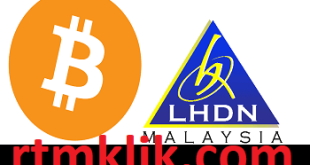Tether (USDT) is a cryptocurrency stablecoin pegged to the U.S. dollar. It was launched in 2014 and operates on several blockchains such as Bitcoin, Ethereum, Tron, and others.
The key feature of Tether is that every token is backed 1:1 using the capacity of typical fiat foreign money reserves, permitting it to maintain a secure value. This makes Tether beneficial as a hedge in opposition to volatility and a handy way to transact in bucks on cryptocurrency exchanges and constructions that assist Tether.
Tether’s Origins
Tether was established in 2014 by using the usage of Brock Pierce, Reeve Collins, and Craig Sellars as Realcoin, later being renamed to Tether.
It emerged as an answer to furnish steadiness and hedging inner the relatively unstable cryptocurrency markets. By collateralizing Realcoin’s price to the U.S. dollar, the founders sought to create an invulnerable cryptocurrency that should defend itself in opposition to price fluctuations.
The cryptocurrency alternate Bitfinex was once as soon as one of the early key companions that helped launch Tether and combine it into their exchange. Bitfinex and Tether share frequent vendors and executives, principal to ongoing scrutiny of the shut relationship between the two companies.
How Tether’s Stablecoin Works
Tether continues its 1:1 peg through its greenback reserves that lower back and every Tether token in circulation. For every USDT issued, an equal $1 is supposed to be deposited into Tether’s economic organization accounts. This allows clients to redeem USDT for the underlying fiat currency.
Tether operates as a centralized stablecoin, with Tether Limited issuing and controlling the system. This distinguishes it from decentralized algorithmic stablecoins that preserve their pegs with the aid of code and incentives.
Controversies
Tether has been shrouded in controversy involving the legitimacy of its dollar reserves and whether or no longer it truly holds $1 for each USDT. It has claimed that its reserves are completely backed, then again has however to whole a formal audit.
In 2019, the New York Attorney General sued Tether and Bitfinex for allegedly misusing consumer funds. An investigation determined that 74% of Tether’s reserves consisted of money and temporary securities. Tether ended up paying an $18.5 million exceptional and agreed to put up opinions on its reserves.
The opacity around Tether’s reserves has led to fears that it has to be engaged in fractional reserve banking. If its peg has been to fail, it may additionally lead to intense liquidity troubles and market crashes inside the cryptocurrency ecosystem.
Use in Cryptocurrency Markets
Despite the controversies, Tether stays rather well-known due to its utility. It is one of the most substantially used stablecoins with a market capitalization of over $70 billion as of October 2022.
Tether allows shopping for and promoting pairs on many principal exchanges, enabling merchants to move in and out of dollar-pegged positions. It moreover allows quicker and much less complicated transfers between awesome exchanges. Traders usually park bucks in Tether for the period of periods of excessive volatility.
Tether is essential to the cryptocurrency shopping for and selling ecosystem. However, its centralization and lack of transparency run counter to core philosophies of decentralization. This has led to calls for desired stablecoin fashions such as DAI and collateralized cash. Nevertheless, Tether continues to dominate the stablecoin market for now due to its first-mover gain and utility.
The Future of Tether
As regulatory scrutiny on Tether increases, its long-term future stays uncertain. Competitor stablecoins from Circle, Binance, and others are quickly gaining market share. However, Tether’s installed position provides it an advantage in liquidity and integration.
If Tether can show its reserves and attain an apparent audit, it may gain stronger market confidence. However, troubles surrounding its backing and penalties on the cryptocurrency markets are likely to persist. This will fuel calls for higher decentralized stablecoin models.
Despite the controversies surrounding it, Tether made an undeniably necessary contribution in enabling tightly closed rates interior the risky world of cryptocurrencies. As the stablecoin market matures, Tether’s dominance stays under threat. But it nonetheless holds essential to have an impact on modern cryptocurrency trading. Tether is poised to continue to be a key participant amongst stablecoins unless transparency or opposition erodes its market function substantially.
Tether: The Controversial Cryptocurrency Launched with the useful resource of Tether Limited
Tether is a vital stablecoin cryptocurrency that used to be launched in 2014 by using the business corporation Tether Limited. It is amongst the most significantly used and controversial cryptocurrencies, serving as a key thing of the crypto buying and selling ecosystem notwithstanding ongoing questions about its backing and consequences on the market.
Tether Limited and its Launch
Tether was once established through the discovery of Realcoin in 2014 by Brock Pierce, Craig Sellars, and Reeve Collins. Based in the British Virgin Islands, the business enterprise was renamed to Tether Limited and launched the stablecoin Tether (USDT) on a variety of blockchains.
Tether Limited’s purpose was as soon as to create an impervious cryptocurrency backed via real-world assets, starting with the U.S. dollar. This allowed merchants to transact and hedge with crypto assets pegged to fashionable currencies.
The cryptocurrency exchange Bitfinex assisted with Tether’s launch and integration. The two corporations are closely tied with the aid of overlapping owners and executives. This shut relationship has frequently drawn scrutiny from regulators.
Tether’s Function as a Stablecoin
As a stablecoin, Tether maintains its peg to the U.S. dollar by way of dollar-denominated reserves. In theory, Tether Limited holds $1 in monetary group reserves for every USDT token issued. This allows customers to redeem USDT for the underlying fiat currency.
Being pegged to the dollar protects Tether from the volatility of non-stable cryptocurrencies like Bitcoin. Its steadiness made Tether well-known for cryptocurrency retailers searching to hedge or engage in faster transactions.
Tether operates as a centralized stablecoin, with Tether Limited in the manipulation of issuance and governance. This contrasts with decentralized stablecoins like DAI which are counted on clever contracts and collateral to hold their pegs.
Controversy Over Reserves and Effects on Crypto Markets
Tether has been embroiled in controversy situated spherical whether or not or not it truly has the dollar reserves to decrease all USDT in circulation. Tether Limited claims that every USDT is one hundred per cent backed with the resource of reserves. But the organization has however to complete a formal third-party audit of its reserves.
In 2019, the New York Attorney General alleged that Tether misrepresented its reserves and blanketed up an $850 million loss. An investigation determined Tether held adequate reserves, then again 74% had been in cash and brief securities. Tether paid an $18.5 million superb and agreed to put up evaluations on its reserves.
The opaque nature of Tether’s reserves spurred allegations that it is engaged in fractional reserve banking. Critics argue that if Tether can’t uphold its 1:1 peg, it ought to set off liquidity crises throughout cryptocurrency markets.
Others accuse Tether’s unregulated minting of USDT of manipulating crypto prices at some stage in key moments. However, a search for on Tether’s consequences on crypto markets suggests combined results.
Popularity and Importance to the Crypto Ecosystem
Despite the persisting controversies, Tether stays fantastically well-known due to its utility in crypto trading. It has a market capitalization of over $70 billion, making it the third-largest cryptocurrency as of October 2022.
Tether offers critical shopping for and selling pairs, cost stability, and transferability at some stage in exchanges. Traders often park money in Tether as a secure haven for the duration of unstable market swings. While problems persist, Tether stays deeply built-in in the crypto ecosystem.
However, Tether’s centralized manipulation and lack of transparency conflict with cryptocurrency philosophies of decentralization. Competitor stablecoins like DAI and USD Coin are shortly gaining floor with fashions that handle Tether’s shortcomings.
Uncertain Future on the other hand Lasting Influence
Tether faces developing scrutiny from regulators worried about its reserves, results on markets, and centralization. Competitors are suddenly taking a picture of market share from the past dominant stablecoin.
However, Tether keeps first-mover gain and might also continue recognition if it achieves a verifiable audit of reserves. Regardless of its future, Tether profoundly shaped cryptocurrency buying and selling through pioneering dollar-pegged stablecoins.
Tether made massive waves as an early enabler of the crypto market’s steadiness and growth. But its story moreover serves as a cautionary story on the value of transparency and confidence in consistent cryptocurrencies. Going forward, Tether or its rivals have to handle these issues to furnish a truly sturdy stablecoin market.


